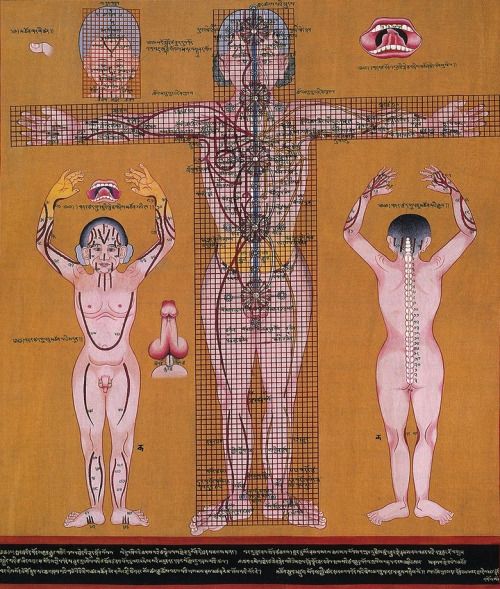THE THREE HUMOURS
︎
A basic tenet of Tibetan medicine is that the functioning of the human organism is supported by the three humours, in Tibetan nyes pa gsum.
These humours arise from various combinations of the elements. Air and space produces the 'wind' (loong) humor. Water and earth produces the ‘phlegm’ (peken) humor; energy, fire and water combine to form the 'bile' (treepa) humor.
The general functions of the 'wind' humor (loong) concerning sense perception, awareness and movements of body and limbs, respiration, swallowing food and drink, circulation of the blood, retaining and evacuating faeces and urine, opening and closing the orifices, the workings of the nervous system and the circulation of the nutritive essence through blood. The general function of 'phlegm' (peken) is to develop the humid wet components of the body, such as saliva and gastric juices and so forth; maintain and safeguard body humidity; prepare food for assimilation; enable digestion; strengthen physical health; make the skin more supple; stabilize the mind; and induce sleep. The general functions of the 'bile' humor (treepa) are to ensure and protect the body heat and particular heat for digestion; maintain the complexion; regulate the stimuli of hunger and thirst; enable digestion of food and drink; and govern the production of bodily substances through the blood (Chogyal Namkhai Norbu, 2006).
︎

︎